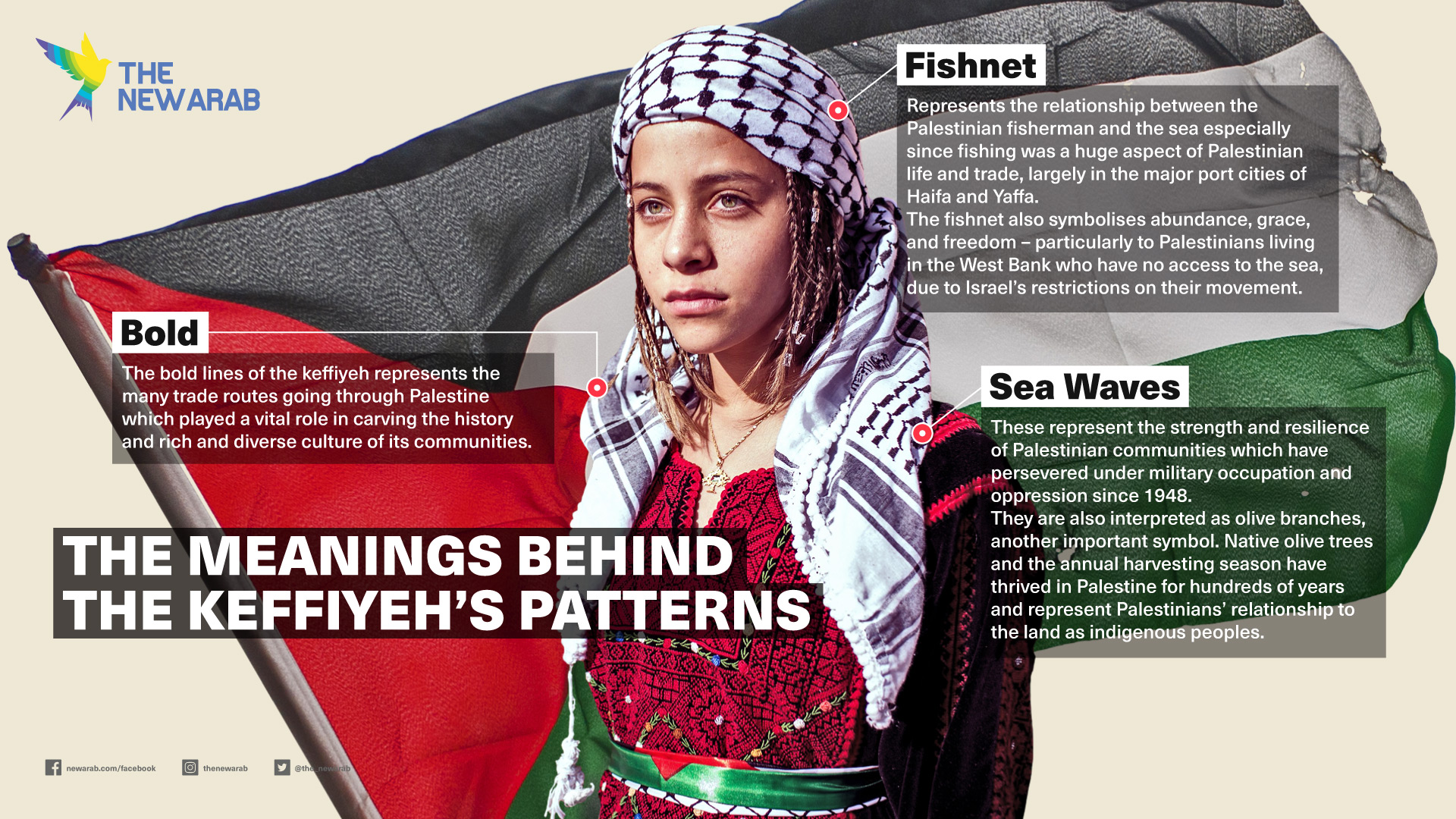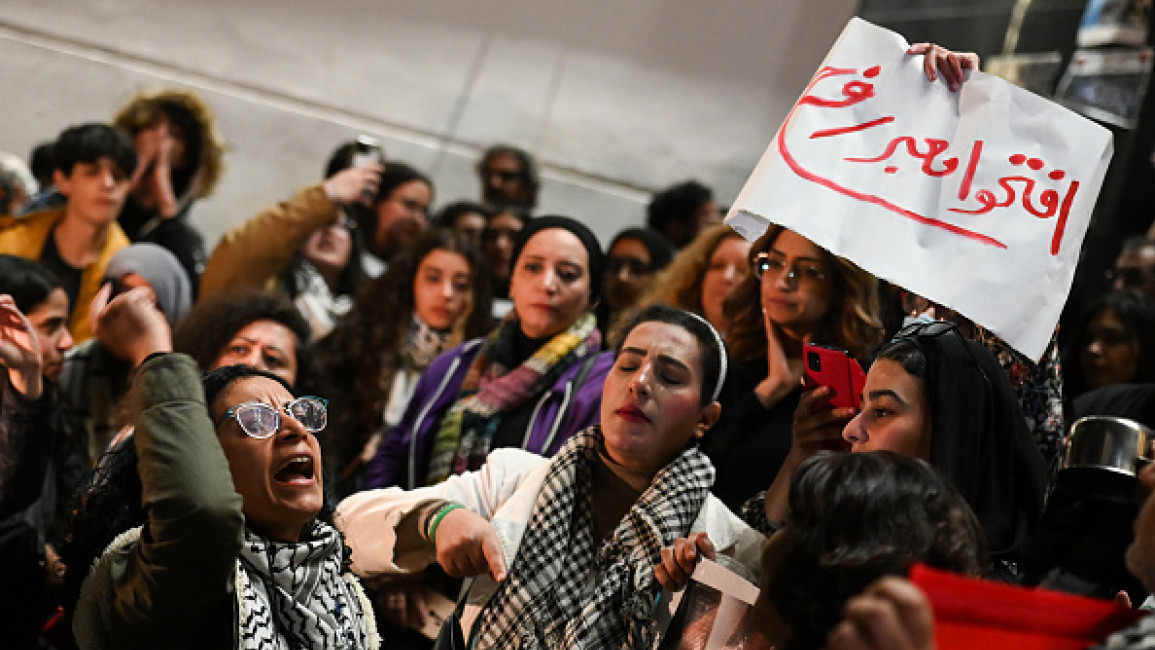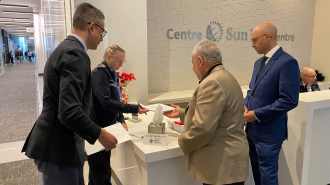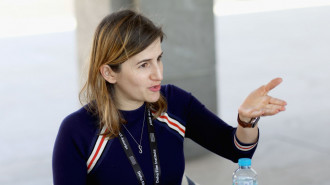
The keffiyeh: Catalysing Palestine’s liberation from one country to another

The keffiyeh started as a protective head and face covering, only for it to become a working-class Arab symbol against British colonialism in the 1930s.
Nearly 100 years later, it is now a transnational staple for those who yearn for Palestine’s liberation.
More than seven months into the genocide in Gaza, with emotions running high for Palestinians and Palestine supporters, the keffiyeh has become not only a public nod to those on the right side of humanity, but a security blanket to remind themselves of the resilience of the nation that refuses to see its country and heritage fade into history.
So how did we come to this?
In a way, the keffiyeh has played this role since it first became a symbol of anti-colonialism, but it was confined by geography, language and culture.
It first became a political symbol and irksome to Western powers during the 1936–1939 Arab revolt in Palestine when resistance fighters wore it over their faces to protect their identity from British soldiers.
Subsequently, the scarf became a symbol for “trouble makers” for the British, who would arrest Palestinians wearing them under suspicion.
From then, the political connotations of the keffiyeh continued, but it only became a global symbol of solidarity as the Palestinian cause took to global heights.
In essence, the more people focus on Palestine, the more popular the keffiyeh becomes.
"I have been in the UK for three years, and this is the strongest form of solidarity I've seen for Palestine," says Rania, a Jordanian-Palestinian student living in the UK.
"The more people focus on Palestine, the more popular the keffiyeh becomes"
Since October 7, 2023, Gaza has been in the collective consciousness as we helplessly watch the live-streaming of a genocide. We’ve watched the annihilation of schools, hospitals, places of worship and homes. We’ve witnessed children being orphaned, the elderly being displaced the same way they were in 1948, and even parents carrying the limbs of their children in plastic bags.
Survivors are letting us into their tents as they blog their journey and become our primary source of the atrocities being carried out against them.
The moral boycott of Coca-Cola has led to restaurants refusing to serve the brand. More than ever, in 2024, we’re seeing ‘ethical cola’ or ‘boycott-friendly fizzy drinks’ on menus as Palestinians and Palestine supporters sigh in relief that their calls for liberation are being heard in the minutiae of their purchases.
Wearing the keffiyeh falls under the same remit.
People are using this scarf to make a statement in the public sphere to identify as visible supporters of Palestine; and Palestinians, whether they usually wear it or not, have been holding it close to their hearts and necks as a symbol of their unwavering nationalism during times in which they are being dehumanised to the level of being referred to as ‘human animals’.
"As a Palestinian, when I see people wearing the keffiyeh, I feel like I have support. In a world where everyone is against us, we need to see some anti-Zionist symbols to keep us going and to remind us that our cause is not over," says Lina, a British-Palestinian.
"I feel a strong urge to tell them that what they are wearing is a part of my ancestry, and I feel like the keffiyeh is a part of my skin, so when I see others wear it, I feel like we are one. I become proud of my heritage"
Palestinians seeing the streets they’re walking in flooded with keffiyehs has been one of significant comfort and temporary pacification of the daily anguish that comes with watching their country suffer from afar.
It reminds them that they’re not alone, that people are watching, listening and allowing Palestine to quite literally blanket over their heart centre.
"I feel a strong urge to tell them that what they are wearing is a part of my ancestry, and I feel like the keffiyeh is a part of my skin, so when I see others wear it, I feel like we are one. I become proud of my heritage, and I’m proud of them for being able to stick up for something that at the moment it’s difficult to support such cause whether there is a lot of a position," Rania adds.
For Mounia, a British-Algerian lifelong supporter of Palestine, wearing the keffiyeh is a "reminder that we’re all in this together."
She adds, "Receiving a ‘free Palestine’, or ‘I love your scarf’, or a ‘well done’ when wearing such a sentimental item shows the united fight for justice. It’s often safe to assume that those wearing the keffiyeh have chosen to wear it based on something they’ve seen happen to Palestine online.
"To actively choose to wear a keffiyeh is to plug solidarity into the collective, resist anti-Palestinian racism and Islamophobia in the eyes of those who associate Palestine with their anti-Muslim prejudice," adds Mounia.
It’s also a signpost to community activism. People are more likely to stop and ask if there’s a protest happening soon or share their own local, online and transnational action groups.
The keffiyeh will bring healers, protesters and artists together to bring their heads together and share their skills and creativity to produce genius forms of activism and advocacy.
No scarf has evoked as much controversy, emotion and action the way the keffiyeh has. Despite attempts of depoliticisation by cultural appropriation, crazes and even bans, the keffiyeh is a staple symbol of Palestine.
"On World Keffiyeh Day, wear your keffiyeh and wear it with pride," Mounia continues.
"You are on the right side of history and you are opening doors to embolden others to take actions of solidarity. Palestinians are not alone in spirit and Palestine supporters aren’t alone in action. Keep wearing it, keep empowering each other and keep Palestine on the agenda, always."
Diana Mohammed is a Palestinian writer, political analyst and life coach
Cover illustration by Dania K. Follow her work on Instagram: @cestdania











 Follow the Middle East's top stories in English at The New Arab on Google News
Follow the Middle East's top stories in English at The New Arab on Google News


